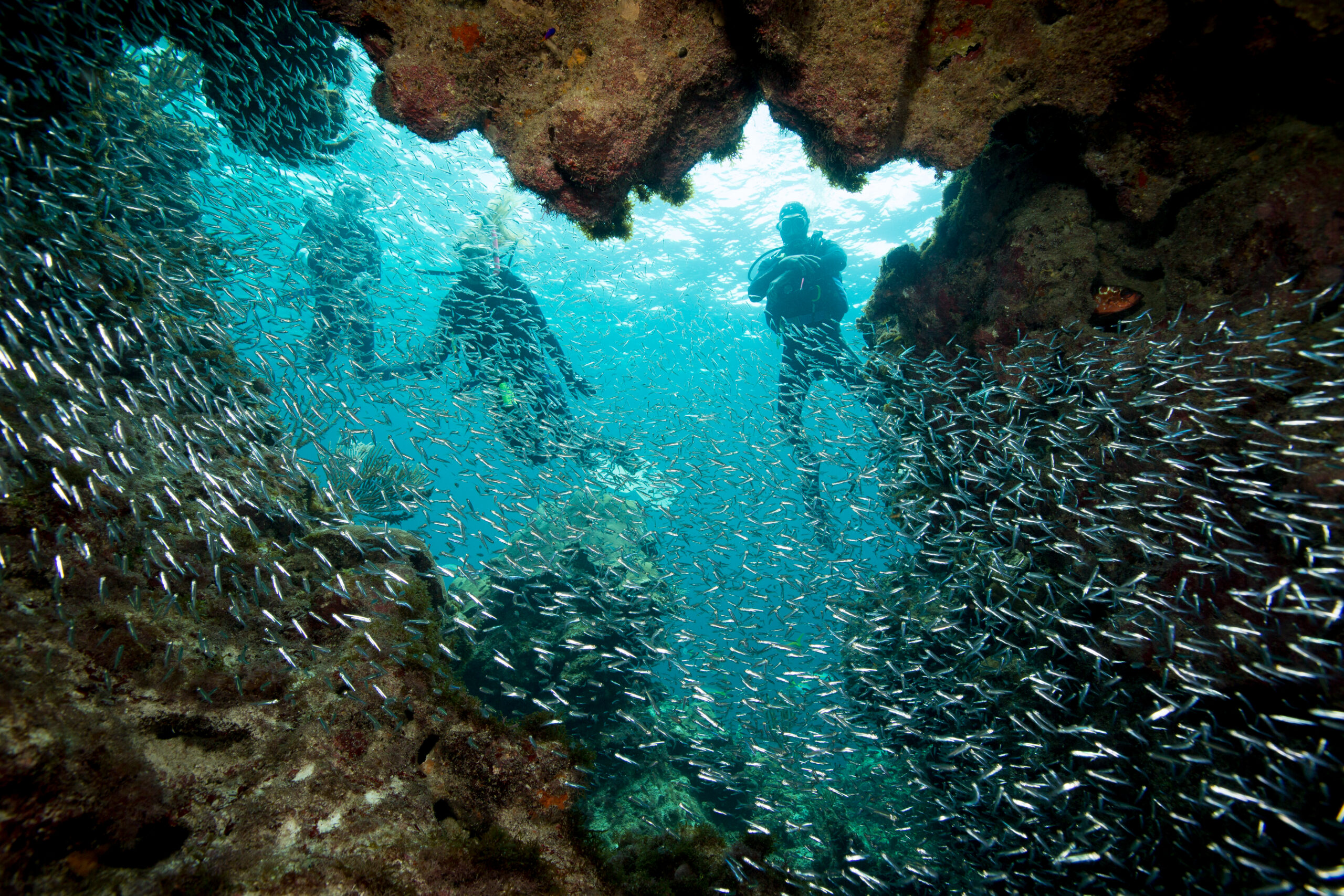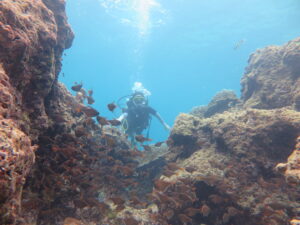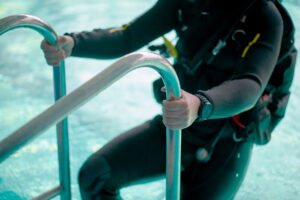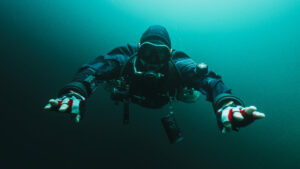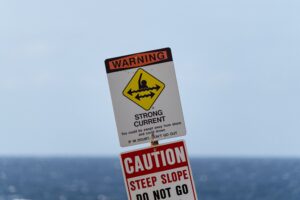What is Cavern Diving?
Cavern diving is a specialized form of scuba diving that involves the exploration of naturally occurring underwater caves and caverns. Unlike cave diving, which takes divers deep into underwater cave systems with no direct access to the surface, cavern diving remains within the sunlit zone, maintaining a relatively shallow depth and a safe distance from the surface. This form of diving allows scuba enthusiasts to experience the thrill of exploring unique underwater environments without the extensive training and equipment required for cave diving.
The Basics of Cavern Diving
Cavern diving is defined by two main parameters: depth and distance. Divers must not exceed a depth of 70 feet (21 meters) or venture more than 200 linear feet (60 meters) from the surface opening. This ensures that divers are always within emergency swimming distance of the surface and can quickly return to the open water in case of an emergency.
Because of its proximity to the surface, natural sunlight illuminates caverns, offering a visually spectacular experience. The sunlight not only adds to the beauty of the environment but also serves as a constant reminder of the exit, guiding divers safely back to the surface.
Safety and Training
While cavern diving is considered less risky than cave diving, it is still a potentially dangerous activity that requires proper training and certification. Divers interested in cavern diving should seek instruction from qualified organizations, such as the Professional Association of Diving Instructors (PADI) or Scuba Schools International (SSI). These organizations provide courses specifically designed for cavern diving, including training in navigation, buoyancy control, emergency procedures, and the use of specialized equipment.
Equipment
Cavern divers use standard scuba gear, such as masks, fins, and regulators. However, additional equipment is necessary to ensure safety and efficiency during the dive. But beyond this foundational gear, cavern diving necessitates additional, specialized equipment. This equipment is designed to counter the challenges presented by the cavern environment: limited light, tricky navigation, and the potential for rapid changes in depth. It is in these challenges that cavern diving diverges from its open-water counterpart. Some of the specialized gear used in cavern diving includes:
Primary dive light
The primary dive light, a fundamental piece of equipment in cavern diving, is a powerful underwater flashlight that allows divers to overcome the natural darkness of the underwater caves. This illuminating device is crucial for divers to navigate through the labyrinthine subaquatic caverns, revealing hidden passageways and emphasizing the cavern’s natural features.
Backup dive light
Equally important is the backup dive light, which serves as a secondary source of illumination. This critical safety feature is deployed if the primary light source fails, providing continuous visibility in the light-deprived environment. It ensures that the diver can always find their way back to the entrance of the cavern, even in the event of a primary light failure.
Line and reel
The line and reel are perhaps the most symbolic pieces of cavern diving gear. The line acts as a physical tether to the world above, a reliable guide that traces the diver’s route from the cavern’s mouth. The reel houses this line and allows it to be progressively deployed or reeled back in, depending on the diver’s progress. This simple yet effective tool is vital for ensuring a safe return path, a literal lifeline to the surface.
Dive computer
In the domain of modern diving technology, the dive computer has revolutionized safety and dive planning. This small, wrist-mounted device continuously monitors depth, dive time, and air consumption. By doing so, it becomes an essential tool for avoiding decompression sickness, better known as ‘the bends’. The dive computer allows divers to make real-time decisions about their safety based on empirical data, ultimately enabling longer and safer dives.
Surface marker buoy (SMB)
The surface marker buoy (SMB) is an integral component of diver safety during surface intervals and the completion of the dive. This brightly colored inflatable device floats on the water’s surface, tethered to the diver below. It serves as a visible signal of the diver’s position, alerting boat operators and other surface observers to their presence. In the event of an emergency, the SMB becomes a vital means of signaling for help.
Conservation and Environmental Awareness
Caverns are delicate ecosystems that can be easily damaged by human activity. Divers must adhere to strict guidelines to minimize their impact on these environments. Touching or disturbing the cave formations, such as stalactites and stalagmites, can cause irreparable damage. Additionally, divers should be cautious about their equipment and movements to avoid stirring up sediment, which can reduce visibility and harm the delicate balance of the underwater ecosystem.
Key Takeaways
Cavern diving is a unique and exhilarating experience that allows divers to explore the underwater world’s hidden beauty while remaining within the safety of the sunlit zone. With proper training, certification, and equipment, divers can safely navigate these enchanting environments and enjoy a truly unforgettable underwater adventure.
Cavern diving also provides an opportunity for divers to develop a deeper understanding and appreciation of the fragile ecosystems that exist within these underwater sanctuaries. By practicing responsible diving techniques and adhering to conservation guidelines, divers can help preserve these precious environments for future generations to enjoy.
In the realm of scuba diving, cavern diving stands out as an accessible and rewarding pursuit that combines the thrill of exploration with the serenity of the underwater world. From the cenotes of Mexico to the freshwater springs of Florida, cavern diving offers a diverse range of experiences, each with its own unique geological features and marine life. As long as divers maintain a respect for the environment and prioritize safety, cavern diving will continue to captivate and inspire those who venture into its depths.

